Xiaomi 14 Ultra Intro
The Xiaomi 14 Ultra is global! Well, kind of — no USA launch as of yet. So, what is it and should someone be jealous? What’s so Ultra about the Xiaomi 14 Ultra?
The Xiaomi Ultra series has been around for a few years now, sold only in China. They are usually the peak of Xiaomi smartphone photography — full partnership with Leica for top-tier lens materials, and expensive sensors underneath. The 14 Ultra comes with four different sensors on its main camera module, covering multiple focal lengths and use cases. Plus, it has a new pro-grade video mode in the camera app.
It was announced, at the Xiaomi keynote leading into MWC 2024, back in the last days of February. Now, the Xiaomi 14 Ultra is available for €1499 in Europe, which translates roughly to $1623 (but rough conversions rarely match market reality).
What’s new about Xiaomi 14 Ultra
- New design with a symmetrical curved glass
- Stepless variable aperture on the main camera
- New Sony LYT-900 sensor
- Dolby Vision end-to-end workflow — record, watch, edit, export
- Single block aluminum build
Table of Contents:
Also read:
Xiaomi 14 Ultra Specs
Coming out swinging
The Xiaomi 14 Ultra is a flagship phone to the bone… or to the processor and cooling, that is.
| Specs | Xiaomi 14 Ultra |
|---|---|
| Size and Weight | 161.4mm x 75.3mm x 9.2mm 219.8 g |
| Display | 6.73″ OLED 1-120 Hz LTPO 3,000 nits peak brightness 1,000 nits typical |
| Processor | Qualcomm Snapdragon 8 Gen 3 |
| Software | Xiaomi HyperOS (Android 14) |
| Cameras | 50 MP main, f/1.63 – f/4.0, OIS 50 MP ultra-wide, f/1.8 50 MP 3.2X zoom, f/1.8, OIS 50 MP 5x zoom, f/2.5, OIS 32 MP front, f/2.0 |
| Battery Size | 5,000 mAh |
| Charging Speeds | 90 W via cable 80 W wireless |
| Price | 16 GB / 512 GB – €1,499 |
Yeah, you read that right — the main camera has a variable aperture, and if you work it manually in the Pro mode, you can actually see the physical ring inside the camera lens closing and opening said aperture. It’s very obviously a camera-centric smartphone. Aside from the main camera, which rocks one of Sony’s fancy new LYT-900 sensors, the rest of them all have the same Sony IMX858 — an expensive luxury, which ensures similar quality as you swap through different focal lengths. And, of course, we have LPDDR5X and UFS 4.0 storage to complement the extra-fast Snapdragon 8 Gen 3.
Xiaomi 14 Ultra Design & Colors
Leather camera finish
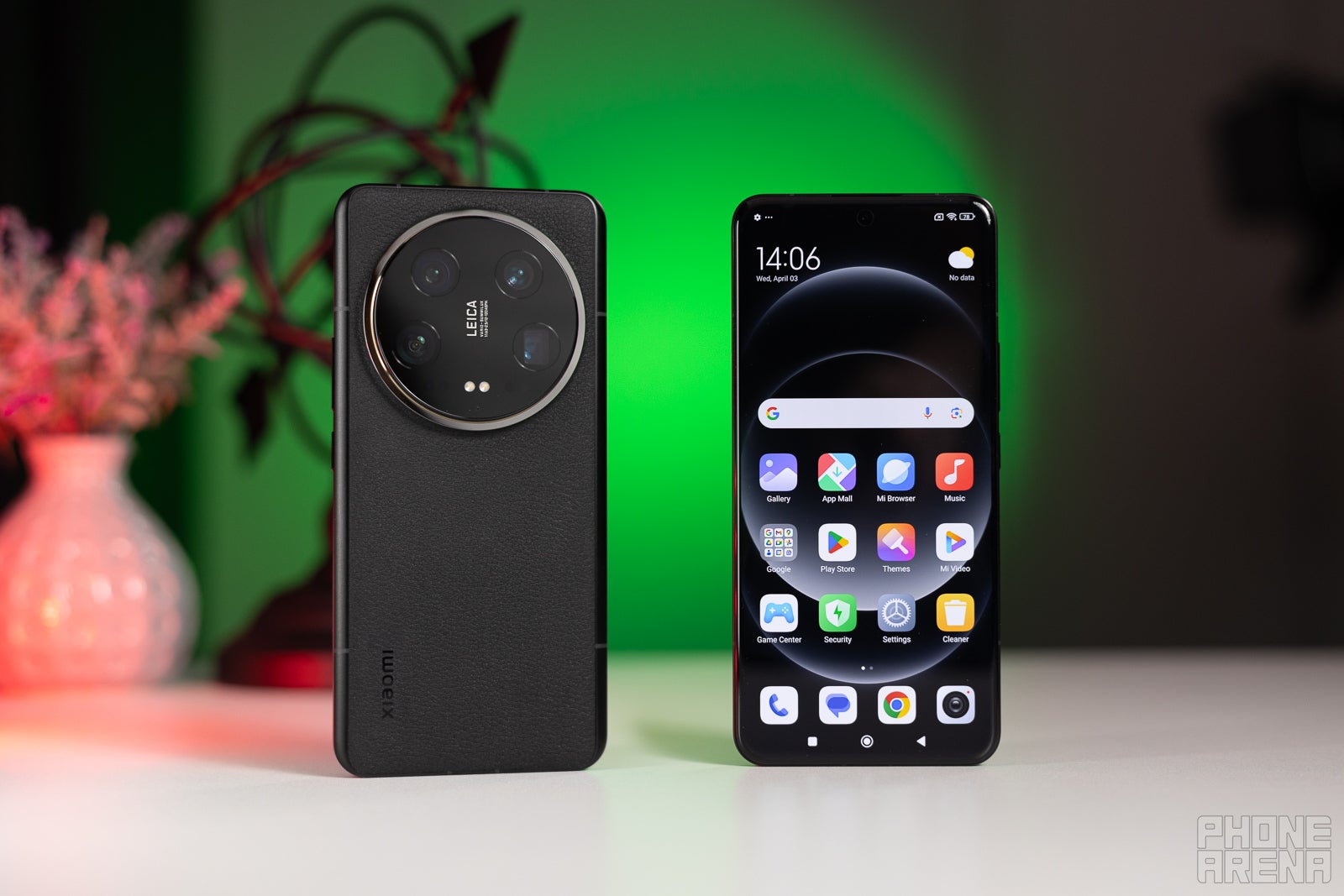

It comes in black (Image credit – PhoneArena)
Repeating the design of the Xiaomi 13 Ultra, but refining it to a good extent — the Xiaomi 14 Ultra has a flat back, instead of a slope towards the camera side. It’s covered in faux leather, which feels soft and grippy to the touch, and definitely invokes the feel of camera equipment. It’s vegan leather, reportedly tear-resistant, and it does feel like a very sturdy material. The entire phone is, of course, IP68 rated for dust- and water-resistance.
The aluminum frame has a flat side with stark bevels, which do feel sharp but not rough. It’s all cut from a single block of aluminum, Xiaomi says, so it has better durability than most phones, that have frames fused from multiple cuts. But no, it’s not covered by titanium.
The power button is engraved with a pattern that’s very pronounced and hard to miss, while the clicky volume rocker is smooth by contrast.
That camera bump on the back is pretty respectable-looking, but we found that it doesn’t add a weight unbalance to the device. In fact, if felt pretty balanced, even somewhat light, considering the calibre of phone we are holding.
But speaking of the camera — this thing definitely clicks and clacks as you wave it in your hand. That’s the stabilization and probably other moving parts inside that quad camera module — and it’s a bit unnerving. We’d trust Xiaomi that everything is held in place securely, but also — we wouldn’t shake this phone for fun, or take it to vigorous physical activities.
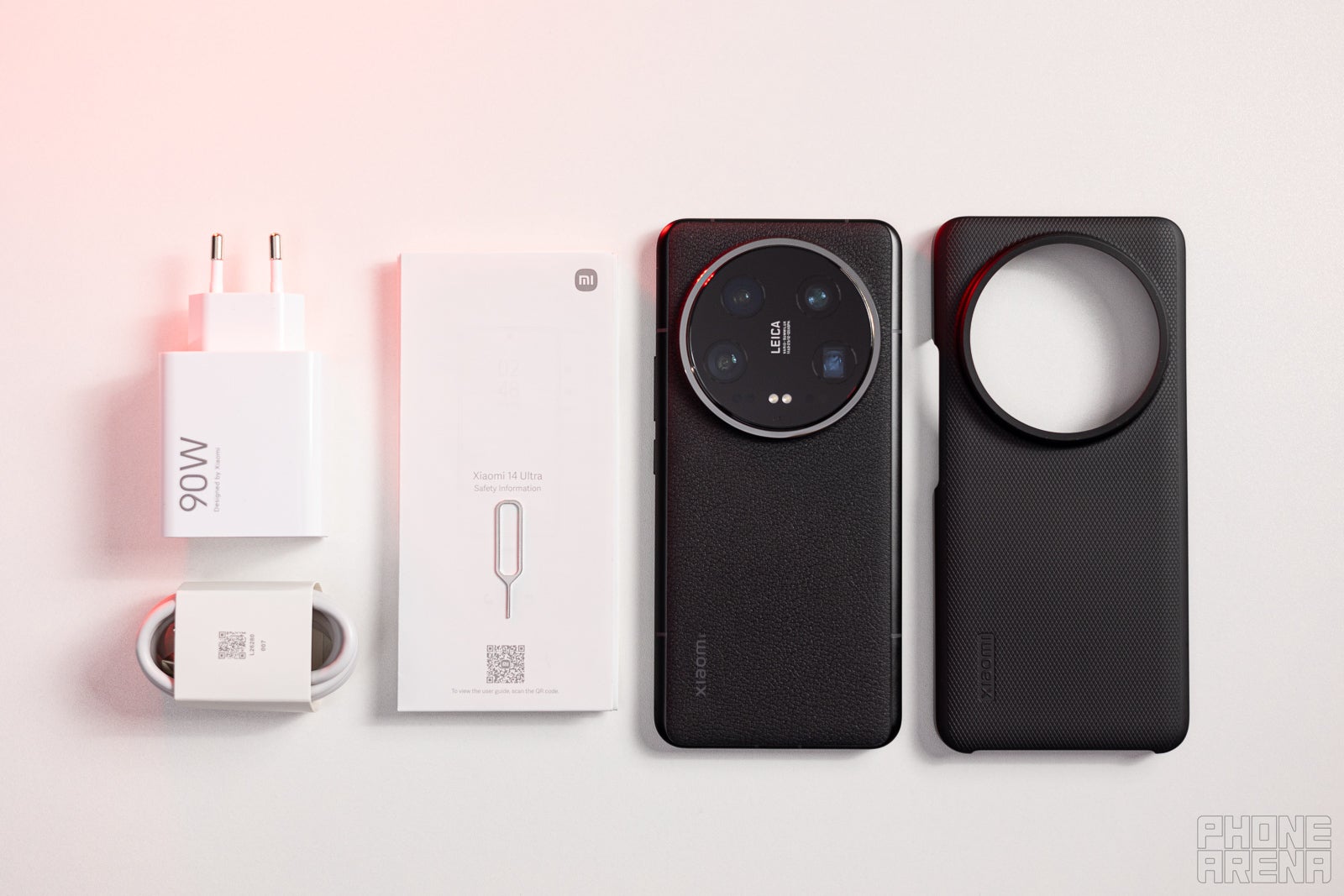

A rare charger spotted in the box (Image credit – PhoneArena)
Inside the box, we actually get more than what your typical flagship comes with — a charger! And a case! Well, it’s not a phenomenal case — it’s a thin plastic that gets greased up easily and will only provide basic protection. But it’s still a freebie.
- Xiaomi 14 Ultra
- 90 W wall charger
- USB C cable
- Plastic case with patterned back
- Booklets and SIM tool
Xiaomi 14 Ultra Display
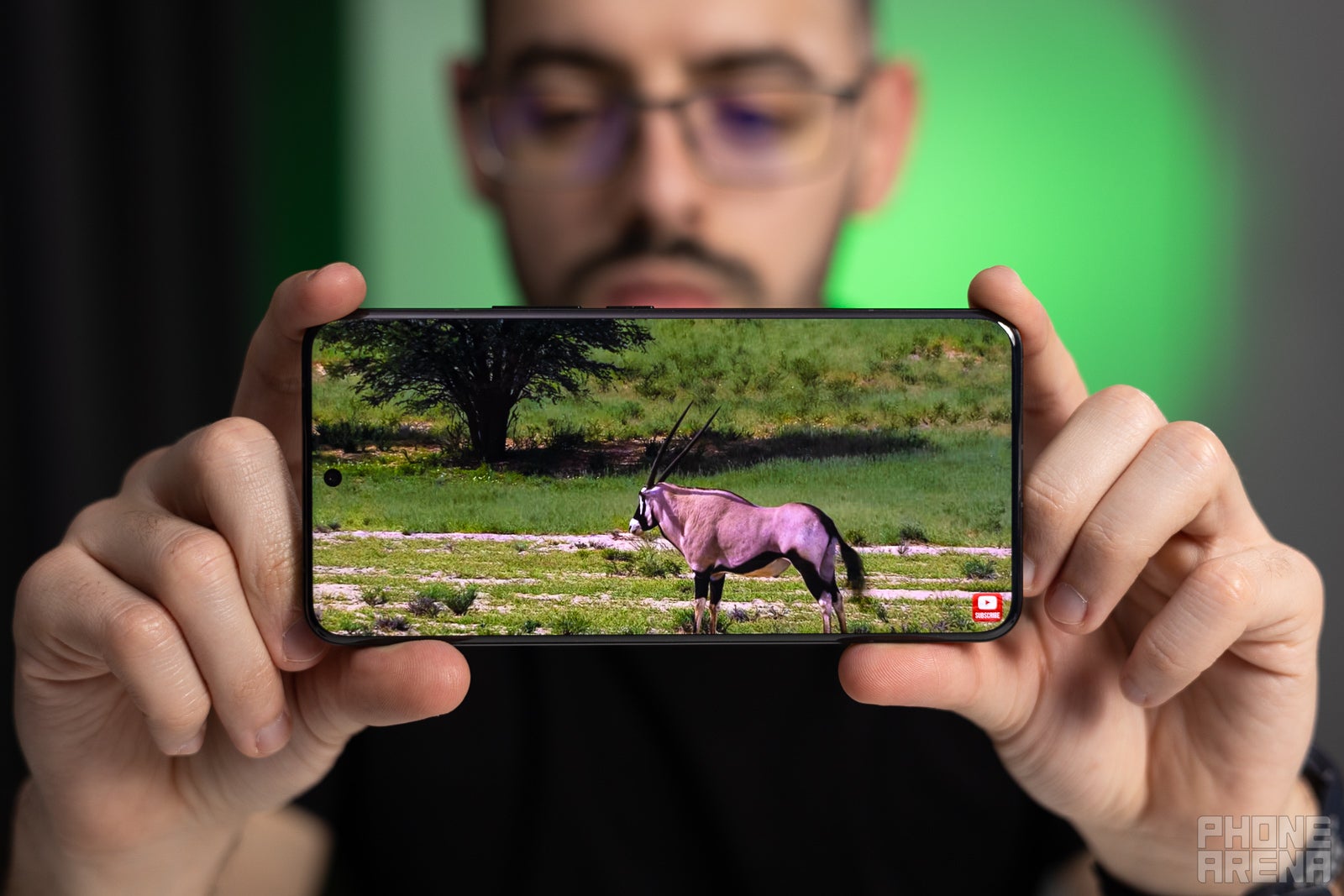

Fantastic screen to match that camera (Image credit – PhoneArena)
The screen glass has a curve on every side, perfectly symmetrical even around the corners of the phone. However, it does not cut into the image of the display, it just helps it round off and meet the aluminum frame in a fancy soft corner.
It’s an LTPO AMOLED panel with a 1-120 Hz refresh rate and a 1440 x 3200 resolution for a 522 pixels-per-inch density. It looks crisp, clear, and colorful. Xiaomi stated 3,000 nits peak brightness, which means only a single area of the screen can hit that, but the promised 1,000 nits typical brightness should be good enough for use in bright ambiance. It also has DC dimming, so those sensitive to the flicker when setting an OLED screen to low brightness shouldn’t see or feel the odd vibrations here.
The glass panel is a new Xiaomi Shield Glass, developed to be stronger than the previous iterations, but we won’t be drop testing that to confirm. The best we can say is that we haven’t accumulated any micro-scratches on the display as of yet.
There’s an optical fingerprint scanner under the display, and it works pretty fast — some fractions of a second slower than Samsung’s ultrasonic scanners, but in no way would we say the scanner of the Xiaomi 14 Ultra is slow or annoying. It’s accurate, it vibrates with a reassuring click, and the software itself lights up and unlocks with a very quick animation.
Xiaomi 14 Ultra Camera
A very impressive setup
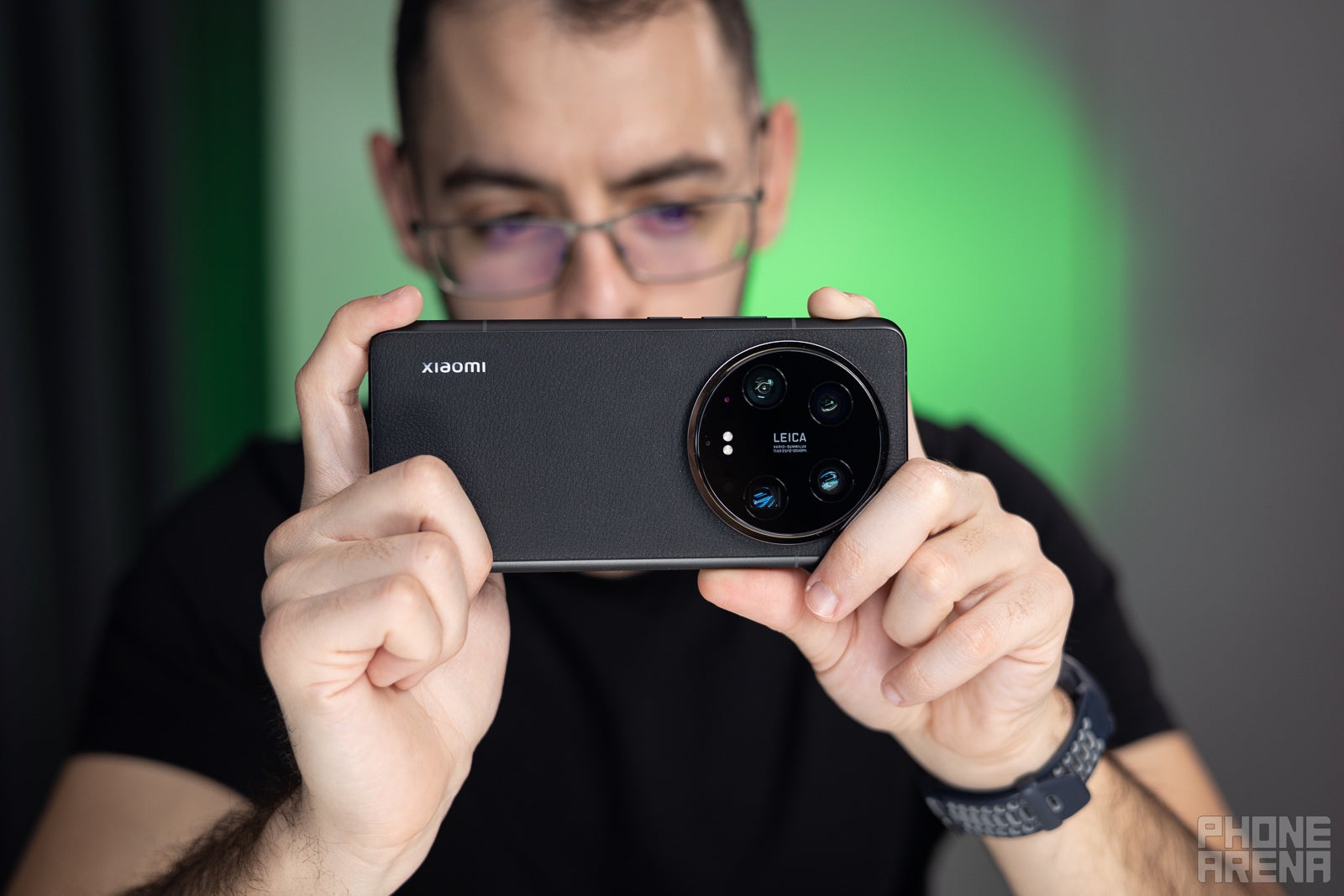

Excuse me, sir, is that a phone attached to your camera? (Image credit – PhoneArena)
The Xiaomi 14 Ultra comes with the new Sony LYT-900 sensor. It’s 1″ in size — which is quite big for a smartphone and typically found in point-and-shoot cameras instead. The new LYT sensors by Sony have a new 2-layer transistor, which helps for more light collection in shorter time periods. Even more impressively, we have a variable aperture, which can go from f/1.63 to f/4.0 in seamless steps of 0.01.
If you don’t know what this means — don’t sweat it, the phone’s Auto mode will take care of it for you. Shutterbugs will have a blast entering Pro mode and opening that aperture for some luscious natural bokeh and a ton of light.
Main Camera
Details are sharp and fine. You can definitely spot signs of oversharpening if you go looking for them, but — in general — we don’t find the Xiaomi 14 Ultra to be overdiong it.
When the sun sets, you can still take some striking photos. The camera’s handling of dynamics and colors does not fade by a bit — you can definitely take some striking night time shots with this one. Depending on the scene, you can see noise reduction and sharpening working to make the finer details a bit more cartoon-like, but in general, it’s a great performer at night.
In line with other flagships in the space, the Xiaomi 14 Ultra‘s “super zoom” camera is a 5x lens. Any magnification beyond that is being helped by very complex algorithms for a maximum of a respectable 120x. At “normal” zooming distances, we think the Xiaomi does quite well — keeping details sharp and dynamics in check. Even up to 10x, you wouldn’t feel it’s a digital zoom.
Selfies
Video Quality
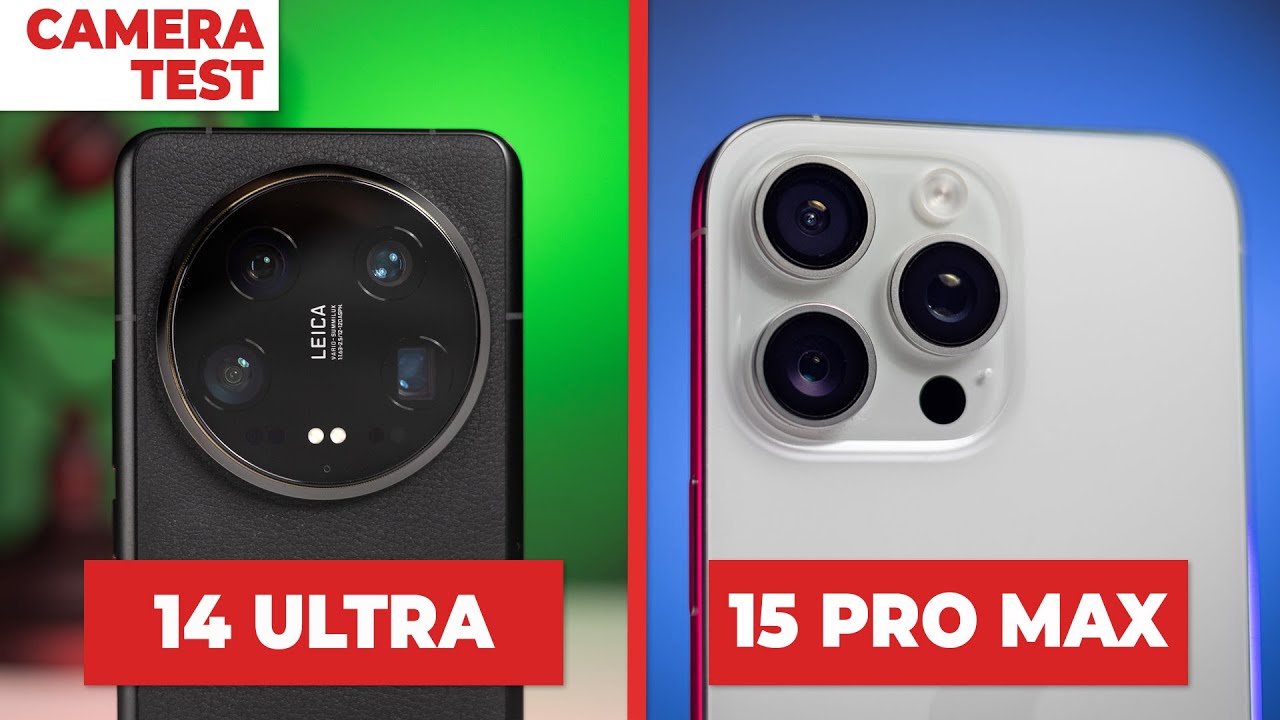
Our camera benchmark is done in-house, by taking all phones through a static set of tests that end up giving us a specific score and point of reference in the end. It’s designed to take any subjective opinions the author may have out of the equation and give you a better idea of how the quality of one camera measures up against another. Read more about our camera test here.
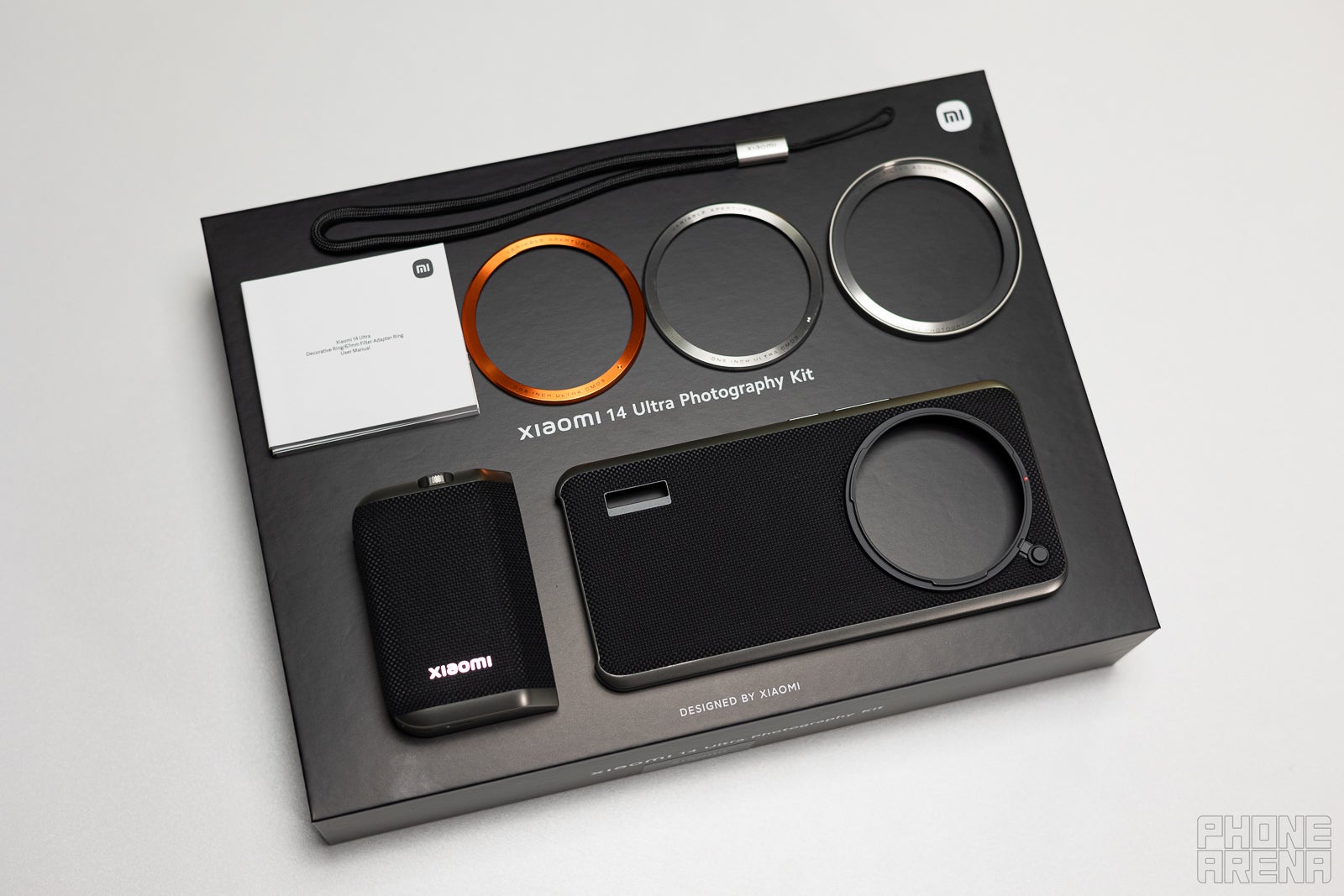

Serious kit for serious photographers (Image credit – PhoneArena)
On the software side, we have RAW capture as well as AI enhanced modes — Master Cinema Mode and Master Portrait have presets, suggestions, and post-processing to get the most out of your photo. Exporting in RAW gets you 16 bit color depth and 16 steps of exposure HDR to play with, all calibrated in partnership with Adobe Labs.
Xiaomi 14 Ultra Performance
Gen 3: Return of the Snapdragon
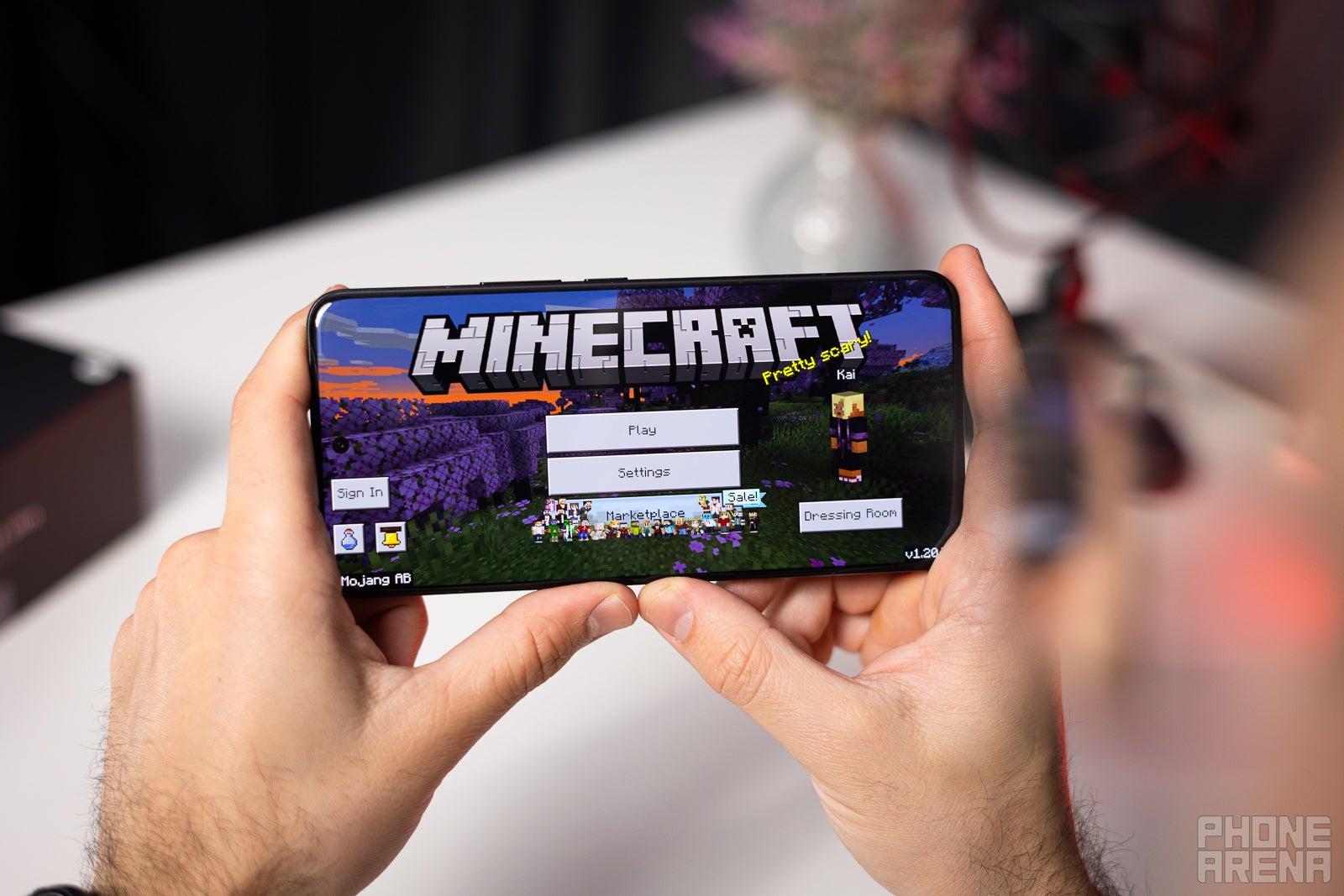

Obviously, the Qualcomm Snapdragon 8 Gen 3 is going to be the ruling processor in Android land, at least for the first half of 2024. And it is here, powering the Xiaomi 14 Ultra without compromise. The phone itself responds in kind with Xiaomi’s proprietary IceLoop cooling system, which should keep things at a lower temperature when gaming and shooting video.
No compromise in memory chips, too, as the Xiaomi 14 Ultra comes with UFS 4.0 storage and LPDDR5X RAM — starting at 512 GB and 16 GB respectively. It seems there’s no other variation right now. You’ll have to make do with that 512 GB chip since there’s no microSD card slot.
Xiaomi 14 Ultra OS / Android version
MIUI is no more, say hello to HyperOS
Xiaomi is doing a big push into several fields — AI, electric vehicles, premium smartphones. The new HyperOS is supposed to be the cornerstone of this developing ecosystem. From smart home to smart car to smartphone, Xiaomi imagines all of this running on HyperOS and working seamlessly together.
Of course, we are still at the start of this developing system, so we can sort of see where the imagination of the creators is going, but we have nothing concrete to play with.
Xiaomi wants HyperOS AI to be learning from your lifestyle and to be proactive and helpful. For example, if you light the same smart lamp at a specific time, and at a specific brightness setting — it may just start doing that on its own. The same can be applied to air conditioners, air purifiers, your smart TV, and music playback.
File sharing across Xiaomi devices is meant to be as easy as drag-and-dropping, and workflow should travel seamplessly from phone to tablet to big screen.
Additionally, you can have enlarged folders on your home screen, which is a recent Android skin trend that we fully embrace. A plethora of Always On screen effects, Edge Lighting notification effects. You can get lost in all the settings, but we know a lot of Android fans love that.
- 2024:Xiaomi 14 Ultra launches with Android 14
- 2025:Xiaomi 14 Ultra is on Android 15
- 2026:Xiaomi 14 Ultra is on Android 16
- 2027:Xiaomi 14 Ultra is on Android 17
- 2028:Xiaomi 14 Ultra is on Android 18
- 2029: Last security patches and end of support
Xiaomi 14 Ultra Battery
Built to last long and recharge fast
PhoneArena Battery Test Results:
The Xiaomi 14 Ultra‘s endurance shines under heavy load — we don’t know what’s going on under the hood, but it definitely beats the Android competition when gaming. Interestingly, it’s quicker to drain its battery doing casual tasks — our web browsing test is designed to simulate average daily browsing about.
When you manage to squeeze it dry with too much video recording or gaming, you can fall back on the 90 W HyperCharge brick or 80 W wireless HyperCharge:
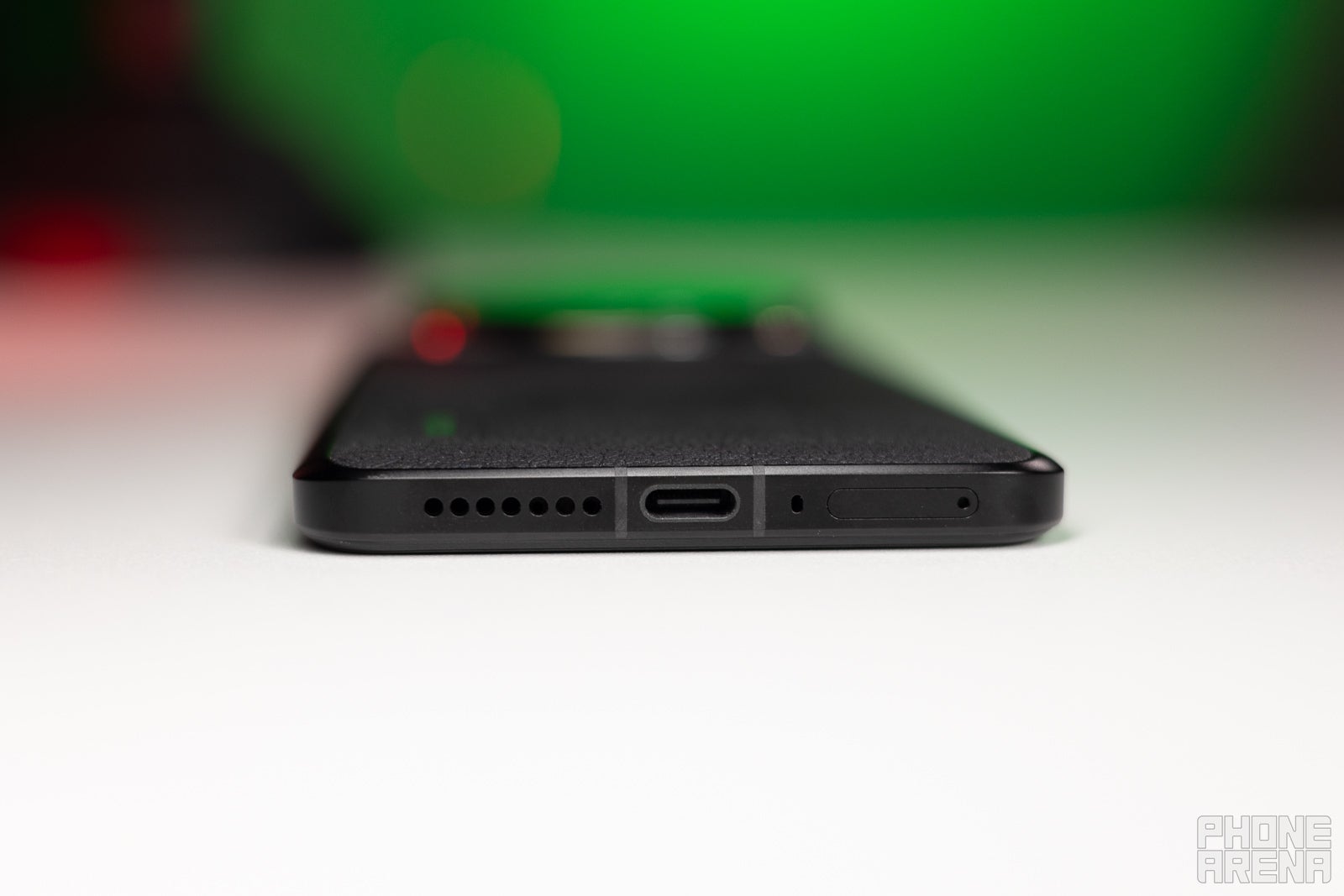

Quick charger! (Image credit – PhoneArena)
PhoneArena Charging Test Results:
With the included powerplug, the Xiaomi 14 Ultra is a beast — if you only have 15 minutes on the wire, you still get almost half your battery. This should definitely be good enough to keep you connected through the day if you are mindful. 30 minutes of charging and you are pretty much set to use your phone as usual for an entire day.
Xiaomi 14 Ultra Audio quality and Haptics
The haptics of the Xiaomi 14 Ultra are quite good. They are all throughout the interface, and it’s not a strongly pronounced click, that would get annoying after some time, but a feint enough tap that’s still assertive and precise. That’s at the maximum, but you can dial the vibration motor down if you wish to.
Xiaomi 14 Ultra Summary and Final Verdict
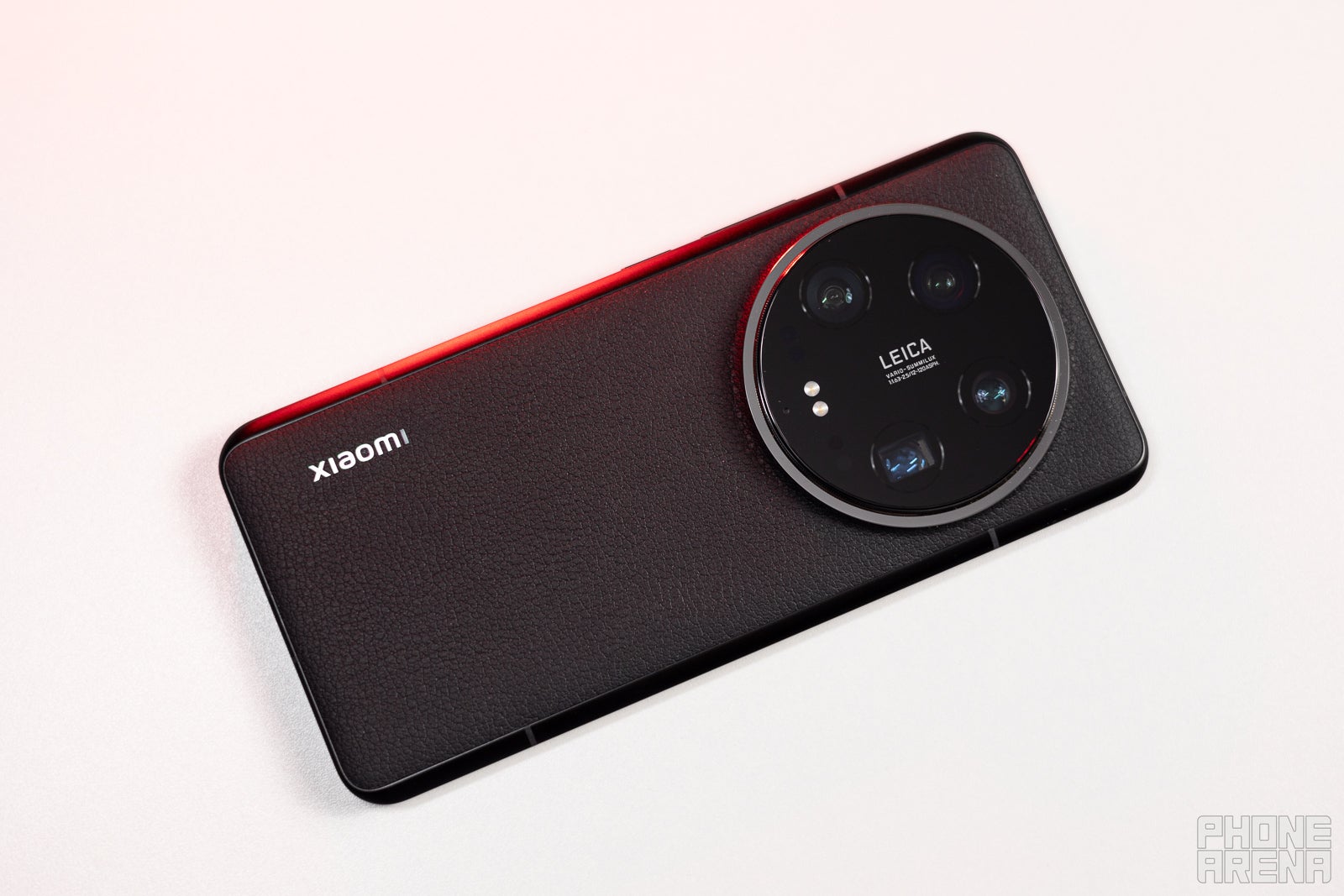

A beauty to behold (Image credit – PhoneArena)
The Samsung Galaxy S24 Ultra is worth a mention here — it delivers a high quality quad camera, plus software and ecosystem that the modern consumer is used to (and may even want to explore further). Samsung’s 7-year software update promise is also nothing to snark at, but if we are to be fair, Xiaomi does give you a total of 5 years of updates, which is absolutely nothing to snark at. And we do expect most users to be planning an upgrade before or around the 5th year anyway.
We go in depth on that topic in our Xiaomi 14 Ultra vs Samsung Galaxy S24 Ultra comparison.
Bottom line — the Xiaomi 14 Ultra is excellent and is a nice alternative for anyone wishing to look in a different direction from the current mainstream portfolio of premium smartphones. But it’s in no way a budget option — you will be coughing up a pretty penny and there are no Enhanced trade-in deals with this one, as there are with Samsung’s flagships.












